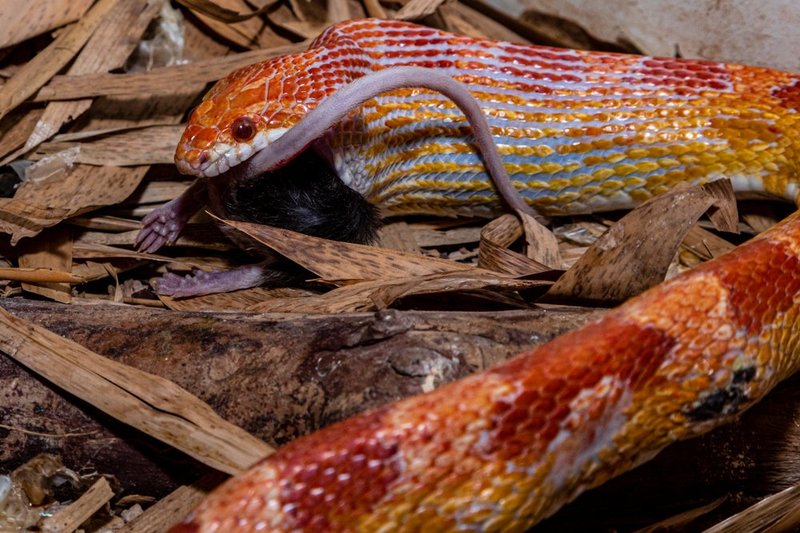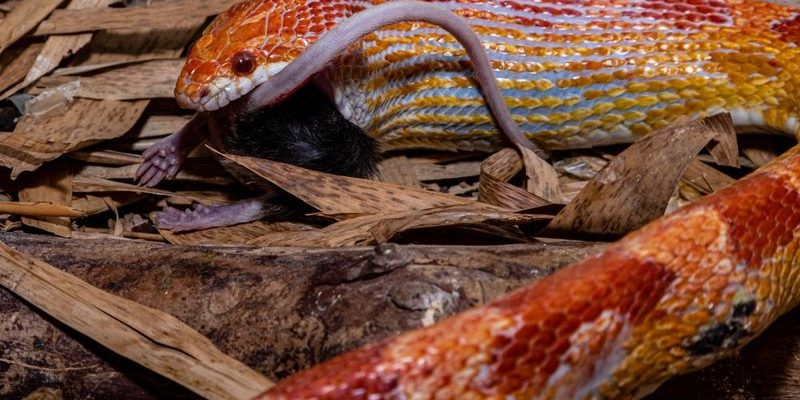
These snakes are not just pretty faces with their stunning orange and black patterns; their lineage is rich with diverse experiences. Whether they’re basking in the sun or hiding in the grass, corn snakes have a story that connects them deeply to their environment and showcases the ever-changing nature of life on Earth. So, let’s dive into their past and see how they evolved into the beloved creatures found in homes and wild areas alike.
Origins of the Corn Snake
To understand the corn snake’s evolution, we need to start at the beginning. Corn snakes belong to the species *Pantherophis guttatus*, which is part of the colubrid family. This family is known for its diverse and widespread members, and it’s believed that they originated in North America. So, how did these snakes get their common name? It’s thought that the name “corn snake” comes from their tendency to be found in cornfields, where they often hunt for rodents.
These snakes have a rich ancestry that can be traced back to their ancestors who lived millions of years ago. They share a common lineage with other rat snakes, which have adapted to various environments across North America. As they evolved, corn snakes developed specific traits that helped them thrive in diverse habitats, including forests, grasslands, and, yes, those cornfields!
Physical Adaptations
Corn snakes have a variety of physical adaptations that make them unique. One of their most striking features is their bold coloration, usually a mix of orange, brown, and black. These colors serve a purpose: they help corn snakes blend into their surroundings. This camouflage is crucial for hunting and avoiding predators. When you think about it, their colors are like nature’s own art, designed for survival.
Their bodies are long and slender, which allows them to move quickly and efficiently through their environment. Unlike some of their fatter cousins, corn snakes are built for speed. They can escape danger and chase after small prey, like mice and other rodents. This adaptability in both coloring and body shape has allowed them to thrive in various ecosystems.
Behavioral Traits and Survival
Behaviorally, corn snakes are quite fascinating. They are primarily nocturnal, which means they hunt and become active during the night. This is a great strategy for avoiding daytime predators, such as birds of prey. Their keen sense of smell, aided by their forked tongues, helps them find food and navigate their environment.
You might be wondering how they escape from threats. One cool trick corn snakes have is their ability to mimic the behavior of other snakes. If threatened, they may hiss loudly or vibrate their tails to mimic a rattlesnake. This deceptive tactic can scare off potential predators and protect them.
Moreover, they are also known to have a calm temperament. Many pet owners appreciate this trait, as it makes them easier to handle. Their docile nature may have helped them become one of the favorite pet snakes for beginners. It’s fascinating to see how their behavior has adapted over time, making them both effective hunters and charming companions.
Reproduction and Lifespan
Corn snakes’ reproductive habits add another layer to their evolutionary story. They are oviparous, meaning they lay eggs rather than giving birth to live young. Typically, a female will lay around 10 to 30 eggs, depending on her size and health. The eggs are often laid in warm, moist locations, providing the right conditions for the developing embryos.
Once the eggs are laid, the mother doesn’t provide care. Instead, it relies on nature to ensure that the hatchlings can survive on their own. When they finally emerge after around 60 days, these baby snakes are already miniature versions of their parents, ready to start life as independent hunters.
In the wild, corn snakes can live around 6 to 8 years, but in captivity with proper care, some have been known to live over 20 years. This extended lifespan in captivity reflects the closeness we have with these amazing creatures and the understanding we’ve developed about their needs over time.
The Role of Corn Snakes in Their Ecosystem
Corn snakes play a crucial part in their ecosystems as both predators and prey. By controlling populations of rodents and other small mammals, they help maintain balance in the food web. This is important, as an overpopulation of rodents could lead to crop damage and disease spread.
As predators, corn snakes exhibit fascinating hunting techniques called “ambush hunting.” They usually lie in wait for their prey to come close before striking with speed. Watching this behavior in action can be quite thrilling and highlights their adaptation to hunting.
On the flip side, corn snakes are also prey for larger predators, such as hawks, owls, and larger snakes. Their ability to camouflage helps reduce their chances of being spotted, demonstrating how they’ve evolved to survive both as hunters and as potential snacks for others.
Conservation and Future of Corn Snakes
Despite their adaptability, corn snakes face challenges in the wild today. Habitat loss due to agriculture, urban development, and climate change are significant threats. These factors can reduce their natural habitats, making it harder for them to find food and shelter.
Conservation efforts are essential to ensure the survival of corn snakes and their ecosystems. This includes protecting their natural habitats and educating the public about the importance of snakes in our environment. Awareness programs can help reduce fear and misunderstanding towards these creatures, allowing more people to appreciate their beauty and role in nature.
Additionally, many corn snakes kept as pets come from captive breeding programs. This helps reduce the pressure on wild populations, ensuring they continue to thrive in their natural settings. By understanding and respecting these snakes, we can help secure a brighter future for them.
The evolution of the corn snake is a perfect example of adaptation and survival in a constantly changing world. From their captivating colors to their unique behaviors, corn snakes have a rich history deeply intertwined with their environment. Their ability to thrive in various habitats and their role in the ecosystem make them not just impressive creatures but also essential ones.
As we learn about their past, we gain a better understanding of how to care for these snakes and support their future. Whether we admire them in the wild or appreciate them as pets, corn snakes remind us of the beauty of evolution and the importance of preserving our natural world. So next time you see a corn snake, take a moment to appreciate the story that comes with it.

